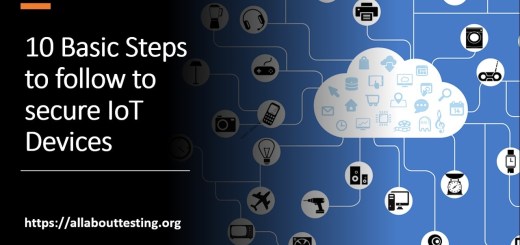Top 5 Vulnerability Assessment Tools to Identify Problems in IT Infrastructure

Vulnerability Assessment (VA) is a periodic activity performed on servers and network devices by security professionals. It is an important activity to secure IT infrastructure. Generally, VA may be performed by both internal and external security auditors. It is scheduled quarterly or half-yearly based on the criticality of servers. VA is defined as a six-step process, as mentioned below:
- Sign an agreement between the auditee organization and the security agency. This is the most important step to initiate the VA activity.
- Document plan of assessment activity. The document should contain tool details, a schedule for assessment, etc.
- Collect information related to IT assets. List out all servers and network devices with exact OS versions—interview the system and network administrator to understand the target IT infrastructure.
- Collect information related to different policy documents such as firewall policy, Incident Response, etc.
- Conduct a vulnerability assessment as scheduled.
- Submit a report to the client with details of each vulnerability. Details such as the name of vulnerability, vulnerability score based on Common Vulnerabilities and Exposures (CVE) databases, description of the vulnerability, list of affected servers(list of hostname or IPs), proof of concept (POC) of vulnerability, remediation steps, etc. should be available in the assessment report.
Below is the list of the top 5 tools which may be used by security professionals to assess IT infrastructure:
Nessus (https://www.tenable.com/)
One of the most used tools by security professionals was developed by Tenable. This tool supports CIS compliance for different flavor operating system and network devices. Additionally, it helps in identifying existing vulnerabilities based on the Common Vulnerabilities and Exposures (CVE) score. This tool gives a detailed report to resolve OS-related issues and recommended fixes.
Available Products: Nessus Essential (Free up to scan 16 IPs), Nessus Professional (paid subscription), and tenable.io (paid subscription)

OpenVAS
OpenVAS is a free vulnerability scanner tool developed by Greenbone Networks. It checks more than 50,000 vulnerability test cases against target servers and network devices.

Nmap (https://nmap.org/)
The most popular free port scanner used to enumerate open ports. It also helps in identifying common vulnerabilities associated with services. This may be the first tool to use in VA activity.
Click Here for Learn Nmap - Nmap Cheat Sheet

TITANIA Nipper (https://www.titania.com/products/nipper/)
A great tool to enumerate network devices like routers, firewalls and switches. It helps in identifying vulnerabilities and reducing positive. Nipper provides exact steps to resolve issues with exact technical fixes.

Nexpose (https://www.rapid7.com/info/nexpose-community/)
This tool is an on-prem vulnerability scanner. Security professionals analyze security issues given by tools and recommend fixes to resolve them.

Conclusion
This article has discussed the top 5 assessment tools to identify vulnerabilities in IT servers and network devices. These tools help security professionals to complete the VA activity. Remember, VA can be performed manually, but it will definitely take more time and miss obvious vulnerabilities.
Subscribe us to receive more such articles updates in your email.
If you have any questions, feel free to ask in the comments section below. Nothing gives me greater joy than helping my readers!
Disclaimer: This tutorial is for educational purpose only. Individual is solely responsible for any illegal act.








